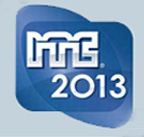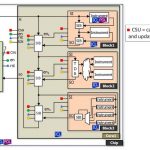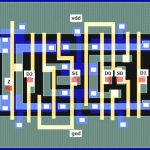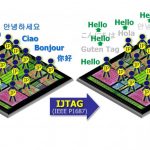You are currently viewing SemiWiki as a guest which gives you limited access to the site. To view blog comments and experience other SemiWiki features you must be a registered member. Registration is fast, simple, and absolutely free so please,
join our community today!
WP_Term Object
(
[term_id] => 159
[name] => Siemens EDA
[slug] => siemens-eda
[term_group] => 0
[term_taxonomy_id] => 159
[taxonomy] => category
[description] =>
[parent] => 157
[count] => 809
[filter] => raw
[cat_ID] => 159
[category_count] => 809
[category_description] =>
[cat_name] => Siemens EDA
[category_nicename] => siemens-eda
[category_parent] => 157
[is_post] =>
)

WP_Term Object
(
[term_id] => 159
[name] => Siemens EDA
[slug] => siemens-eda
[term_group] => 0
[term_taxonomy_id] => 159
[taxonomy] => category
[description] =>
[parent] => 157
[count] => 809
[filter] => raw
[cat_ID] => 159
[category_count] => 809
[category_description] =>
[cat_name] => Siemens EDA
[category_nicename] => siemens-eda
[category_parent] => 157
[is_post] =>
)
Somehow, when designing a chip it is synthesis and place & route that gets all the attention. But it is no good taping out perfect layout without also having away to test the silicon. Somehow, test just isn’t as glamorous.
On September 10-12th is the International Test Conference which, as usual, is at the Disneyland Hotel… Read More
[The VLC developed by Edison2, winner of the Progressive Automotive X-Prize]
Now that we have “The Very Light Car” of the world at more than 100 MPG!! Yes, this is the car developed by Edison2, one among the three winners of the Progressive Insurance Automotive X-Prize, a global competition; Edison2 won in the main stream class. … Read More
The tech standards cycle almost always goes like this: Problems or limits develop with the existing way of doing things. Innovators attempt to engineer solutions, usually many of them. Chaos ensues when customers figure out nothing new works with anything else. Competitors sit down and agree on a specification where things work… Read More
Through my contacts at SemiWiki I was introduced to a mixed signal IP company named SilabTech, and then decided to interview the founder and CEO, Sujoy Chakravarty.
Sujoy Chakravarty, CEO and Founder
… Read More
The growing amount of electronics within today’s automobiles is driving very high quality and reliability requirements to a widening range of semiconductor devices. At the same time, traditional fault models are becoming less effective at achieving desired silicon quality levels. Improvements in test solutions are needed… Read More
On the Tuesday of DAC I moderated a panel session on Hardware Assisted Verification in 10 Years: More Need, More Speed. Although this topic obviously could include FPGA-based prototyping, in fact we spent pretty much the whole time talking about emulation. Gary Smith, on Sunday night, actually set up things by pointing out that… Read More
One new feature at DAC this year is that several of the keynotes are preceded by a ten minute vision of the future from one of the EDA CEOs. Today it was Wally Rhines’s turn. Wally is CEO of Mentor Graphics. He titled his talk Changing the World Through EDA. Since EDA as we know it started in the late 1970s, the number of transistors… Read More
Robust Reliability Verification: Beyond Traditional Tools
by Matthew Hogan, Mentor Graphics
At all process nodes, countless hours are diligently expended to ensure that our integrated circuit (IC) designs will function in the way we intended, can be manufactured with satisfactory yields, and are delivered in a timely fashion… Read More
What: DAC lunch seminar (register here)
When: June 5, 2013, 11:30am – 1:30pm
Where: At DAC in lovely Austin, TX
Dr. Martin Keim of Mentor Graphics will present this overview of the new the IEEE P1687 standard, called IJTAG for ‘internal’ JTAG.
If you are involved in IC test*, you’ve probably heard about IJTAG. If you … Read More
Bats about DAC!by SStalnaker on 05-23-2013 at 8:05 pmCategories: EDA, Siemens EDA
DAC 2013 is closing in fast now…and if you haven’t made your plans for what you want to see and do, you’d better get going! Of course, I’m happy to help you out with a few suggestions…starting with that most important objective—conference swag. Stop by the Mentor Graphics booth (#2046, for those of you who actually look at your floor… Read More










